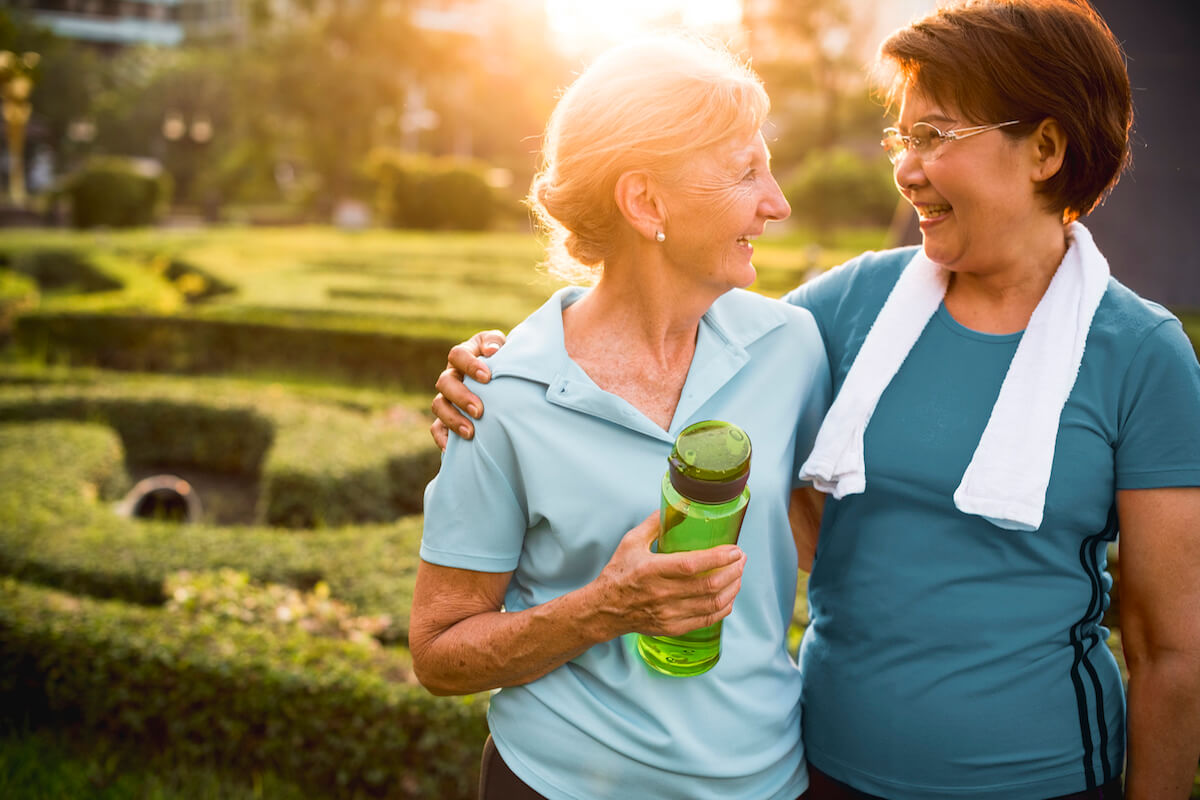5 Exercise Tips From a HarborChase Senior Living Activities Director
Posted By HarborChase on March 1, 2018Exercise plays an essential role in the aging process and your overall health. Regular physical activities increase flexibility, muscle mass, bone density, balance, and endurance. It can improve your mood, energy levels, sleep function and cognitive function to protect against dementia. Exercise can also lower your risk of heart disease, diabetes, and even some cancers!
All these fantastic benefits can derive from just 30 minutes of physical activity a day or 150 minutes a week. The body can be responsive to various types of training and exercise at any age. If you have failed to keep up with regular practice at this point in your life, do not distress, it is never too late to start exercising. If you are starting without a prior regime, just start your exercises at a beginner’s pace as not to overexert yourself.
We asked our HarborChase Activities Director to fill us in on tips for senior exercise. Take a look as they share their top 5 tips and learn more about what HarborChase has to offer!
1. Know Your Limits and Stay Motivated
The first and most crucial step for older adults starting to exercise is to get medical clearance from your doctor or a health professional. Your primary health provider should know if there are any activities too strenuous for your body or that you should avoid altogether. Ask yourself, “Do I have any health concerns?” Diabetes can be affected by exercise, so be sure to run any physical activities and schedules with a medical professional. Stay in tune with your body, if you feel dizziness, chest pressure, or any pain you need to adjust your exercise. Be sure to warm up slowly and steadily, and cool down at a gradually decreasing rate, as well.
Some individuals may find it troublesome to stay motivated before or during their workouts. There are a few ways to combat this nuisance of discouragement.
- Focus on Short-Term Goals (for example, relieving stress)
- Workout with a Buddy (having a partner can help you to motivate each other)
- Keep Track of Your Progress (write down your accomplishments)
- Reward Yourself (Plan something enjoyable after your work out)
2. Start with Beginners Exercises for Seniors
Specific activities are much more beneficial to older adults, especially when choosing an exercise program. Walking is quite possibly the best regime to start exercising. There is no exercise equipment required, and you can perform it almost anywhere. Joining a senior fitness class is a great way to find a work out partner and can help you stay on track with progress. Water Sports is another exercise perfect for seniors who want to start being active.
3. Stay on a Healthy Diet
It is essential to maintain a steady activity plan, but it is also vital to stay on a healthy diet. Starting an exercise regime can often increase one’s appetite, and it is essential to eat the right things when your hunger hits. You want a diet high in fiber, calcium, vitamin D, and even healthy fats. Be sure to consume vegetables, fruits, whole-grains, low-fat dairy, and protein choices such as beans, peas, and fish.
4. Stay Mentally Fit
Staying on track with a functional exercise plan and a healthy diet is not all that goes into maintaining a healthy lifestyle. Actively keeping up with your mental fitness is also crucial for exercise. The best ways to stimulate your brain is with brain teasers, online course, learning a new language, playing an instrument or even, just reading. Exercise can help improve brain function and cognitive ability to a certain extent. Pairing exercise with mental stimulation is imperative.
5. Maintain a Balanced Exercise Routine
Four types of exercise contribute to a balanced workout. The various types that you should exercise regularly are flexibility, balance, aerobic endurance, and strength training. Be sure to spread out these multiple exercises, for example, do not combine aerobic endurance and strength training on the same day. A simple flexibility exercise can be done with stretching before and after your work out or with yoga. Flexibility exercises help to stretch muscles and tissue, which helps in preventing falling and injuries.
Balancing practices can be a little dangerous if you do not know your limits. This type of exercise can be performed with yoga and standing exercises while holding onto something sturdy, like a table. Balancing exercise also helps in preventing falls. Aerobic Endurance exercises are activities like tai chi or square, line, and ballroom dancing. This type of workout increases stamina and decreases your chance of developing diseases. Strengthening exercises can be lifting weights, yoga, or chair exercises. Strength training not only improves personal strength but also increases your metabolism, helping with losing weight and your blood sugar levels.
Chair Exercises are an excellent way for seniors to get flexibility, cardio, and strength training. It is a safer way to perform these activities because you have a sturdy chair to support you and help prevent injury. It is essential to start and keep a proper posture. Some flexibility examples done with the chair program are the seated forward bend and the seated knee to chest move. Some cases of chair cardio are the seated tap dancing or the seated Charleston dance. Some strength examples are the seated bicep curl or seated shoulder raises.
Categories: HarborChase Senior Living, Health Habits


